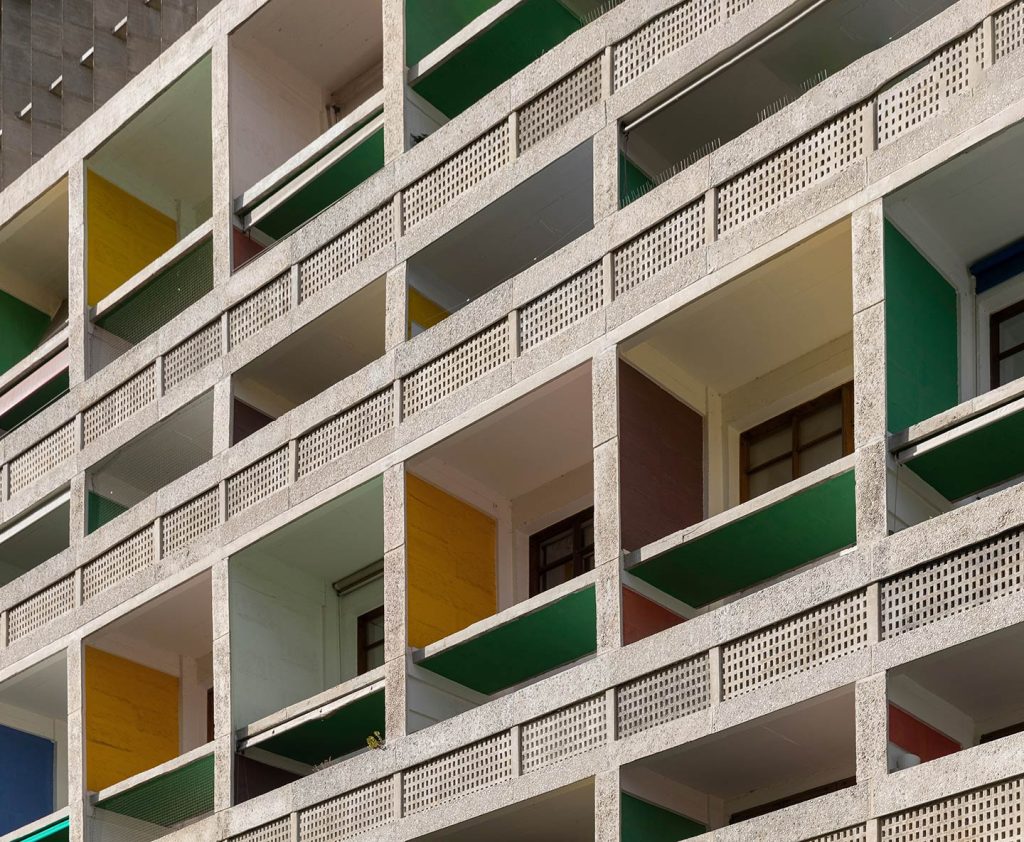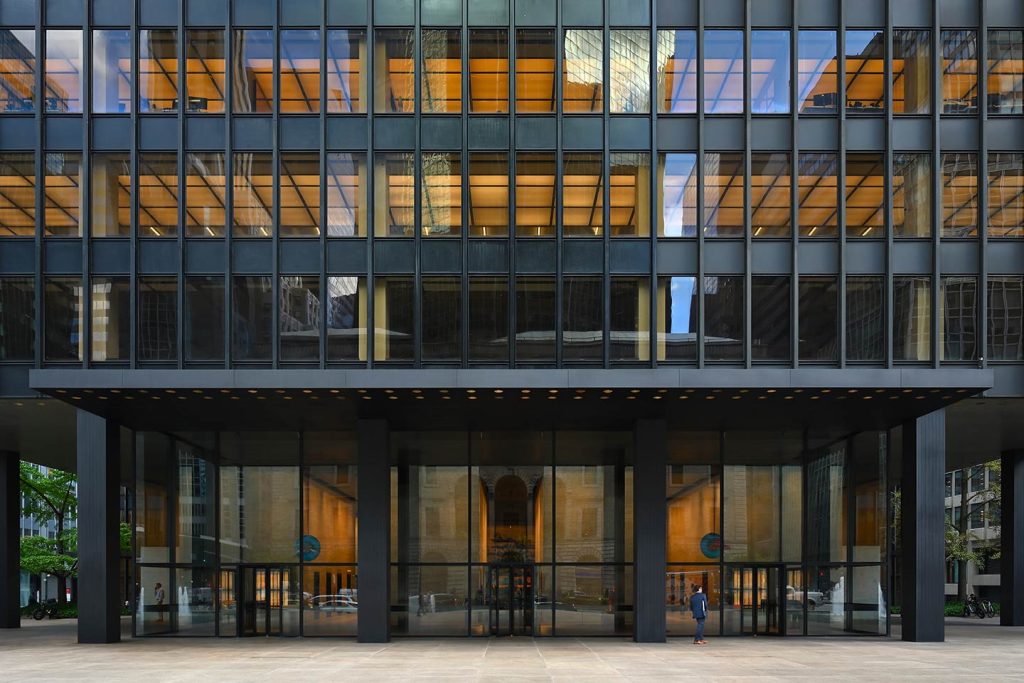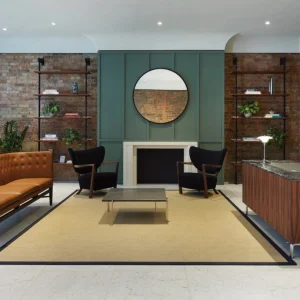
With over 15 years of experience across hospitality, retail and workplace design, Andrew Denman- Davies brings a wealth of expertise to his role at Area. Since joining in early 2021, he has been dedicated to creating innovative spaces and working closely with clients to bring their visions to life.
Can you pinpoint the thought, whether yours or someone else’s that led you to a career in design?
My journey into design wasn’t a straight path. Initially, I explored various interests, from palaeontology to football, and even considered pursuing a career in mathematics or finance. However, a pivotal moment came when I attended a UCAS (Universities and Colleges Admissions Service) fair and stumbled upon an exhibit showcasing interior architecture. It instantly captivated me, sparking a newfound interest that ultimately led me to pursue a career in design.
In terms of the design and architecture industry, what do you consider the most radical era or pivotal moment?
The Bauhaus movement, spearheaded by figures like Walter Gropius, stands out as one of the most radical and pivotal moments in the design and architecture industry. It marked a significant shift in design philosophy, with its emphasis on functionality, minimalism, and integration of art and technology. This movement not only transformed the aesthetic landscape but also laid the foundation for modern design principles that continue to influence architecture and design today.
Which radical thinkers have been inspirations to you in your career?
Gropius has certainly been a significant inspiration to me. His holistic approach to design, blending artistry with functionality, resonates with my own design philosophy. Additionally, Le Corbusier’s innovative ideas and Rem Koolhaas’s groundbreaking projects, including the Prada Epicenter in New York, have left a lasting impression on my approach to design.
Which radical thinkers inspire you now? (Not necessarily forever or for a lifetime – just now!)
While my inspirations have evolved over time, currently, I find inspiration in unconventional thinkers like Dave Brailsford, the coach of the GB Cycling Team. His concept of ‘marginal gains’, focusing on small improvements across various areas, resonates with me as a designer seeking innovative solutions in everyday challenges.
Who outside the industry can architects and designers learn from?
I think UX designers, with their focus on customer-led experiences and results, are a really positive influence. But sometimes, designers can get so wrapped up in their own thoughts and processes that they forget the main goal: to create a space that works perfectly for the end user.

What will lead the way for more radical thinking in your/our field?
Radical thinking in our field will come from a mix of industry initiatives, government regulations, and a strong push towards sustainability. At Area, our commitment to sustainability and our B Corp certification really set the tone for this kind of innovation. Our whole business model is based on the best practices in ethics and environmental sustainability, and we hold ourselves to the highest standards of social and environmental performance, accountability and transparency.
To lead the way in radical thinking, we’ll keep prioritising partnerships with suppliers who share our values, aiming to minimise emissions across the value chain. By championing these values in all our projects, we not only follow but set benchmarks for ethical and sustainable practices. This dedication, along with the industry’s growing focus on sustainable methods and supportive government regulations, will drive the innovative and radical solutions we need to shape the future of our field.
Could you recommend a book/article/blog that inspired your thinking?
Re-Readings: Interior Architecture and the Design Principles of Remodelling Existing Buildings by Graeme Brooker and Sally Stone has been a huge inspiration for me. It shows how reworking existing buildings can be a sustainable and practical alternative to building new ones. Back in university, it was our go-to guide, and I still turn to it even now.
Could you name two buildings/pieces of furniture that you consider radical designs of their time, or perhaps still to this day?
The Seagram Building in New York was groundbreaking with its sleek skyscraper look, breaking away from the usual architectural norms. It was the first building to use a bronze façade and full-height glazing. Even though it’s over 70 years old, it still blends seamlessly with the modern New York skyline. The Oscar Niemeyer Rio Rocking Chair, designed in the 1970s, has these fantastic curves that make it look like it’s from the future. It’s a design that never seems to go out of style, showing just how timeless and innovative it is.
I think best with… (e.g. my hands/a pencil/ with a computer)
I’ve found that I’m most productive when I’m working with a computer. Using digital tools helps me work more efficiently and keeps my thoughts and ideas well-organised. It’s just so much easier than dealing with pen and paper.
I think best… (e.g. first thing in the morning/ last thing at night)
Personally, I find that my best thinking occurs later in the day, often in the evening when I can reflect on the day’s experiences and let my thoughts flow more freely.
I think best when… (e.g. in a gallery/at home/ outside/over drinks/with friends/on the bus)
I find that I think best when I’m in a relaxed environment, like hanging out with friends or coworkers over some drinks. The casual setting allows for open discussions, bouncing ideas off each other, sparking new insights and perspectives.
The thought that keeps me up at night is…
Lately, I’ve been really into the idea of revamping everyday objects for improved functionality and sustainability. Take the umbrella, for instance. I’ve been thinking a lot about how we could make it way more useful, especially in different types of weather – considering ways to make it sturdier in windy conditions, or perhaps incorporating materials that are more durable and ecofriendly. I’ve also been thinking about how we could improve its design to provide better coverage and protection from rain or sun.
The thought that gets me out of bed each day is…
The excitement of tackling new design challenges and the opportunity to create meaningful solutions that positively impact people’s lives is what motivates me to get out of bed each day. Knowing that my work could be part of something bigger, something that matters, fuels my love for design.
Do you like to think with, or think against?
As a designer, I think it’s vital to find a middle ground between sticking to the status quo and daring to think differently. While it’s important to shake things up and push limits, it’s just as necessary to pay attention to what clients want and work together to come up with fresh ideas that fit their needs.

If you weren’t a designer/architect, where do you think your way of thinking would have led you?
If I weren’t a designer, I could see myself pursuing a career related to animals or the outdoors – I’m drawn to roles that challenge me and involve finding solutions. While my path into design wasn’t predetermined, I think my natural curiosity and drive to make a difference would have led me to fulfilling paths regardless.
Could you describe radical thinking in three words?
Daring, unconventional and provocative.
What’s the most radical thing you’ve come across today or this week?
I’ve been intrigued by recent news headlines about robot-controlled ships sailing the seas. It’s got me thinking about the exciting potential of advancements in robotics and AI for different fields, like design and architecture.





